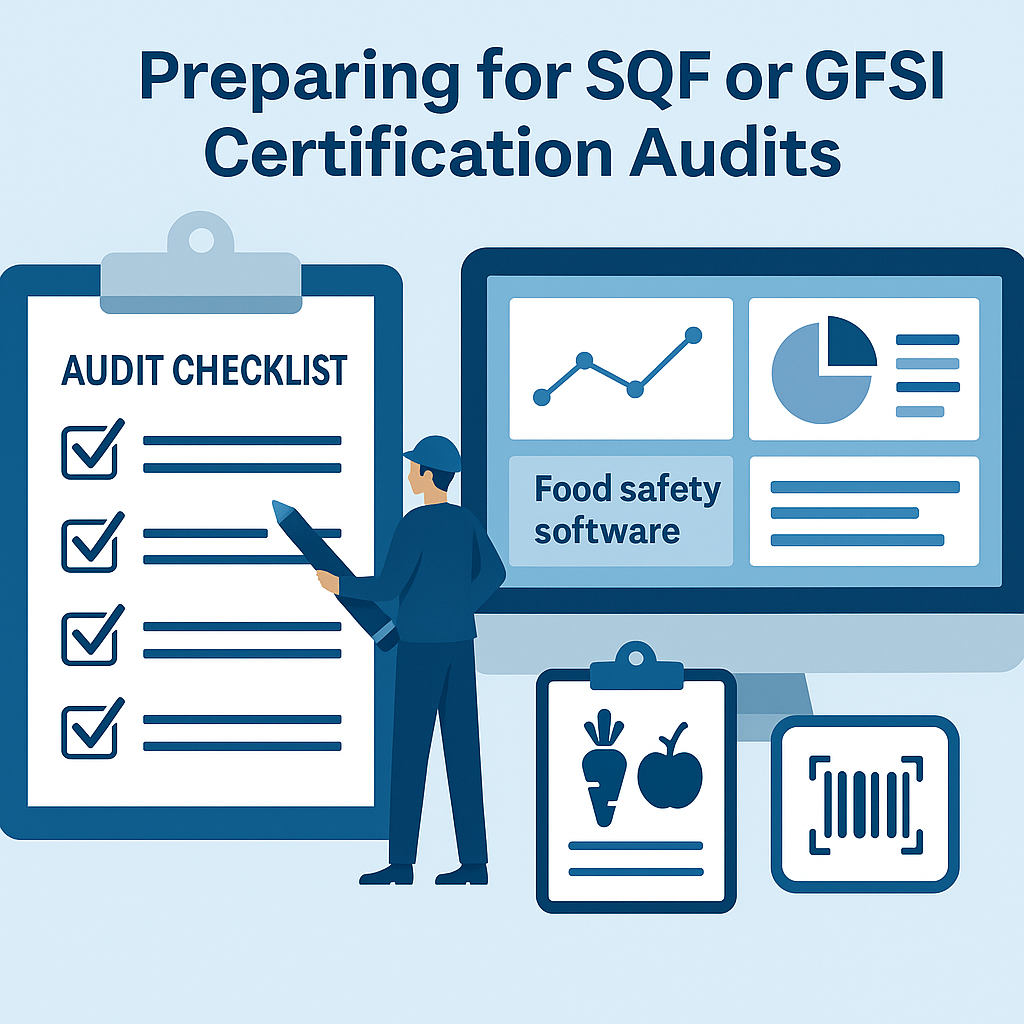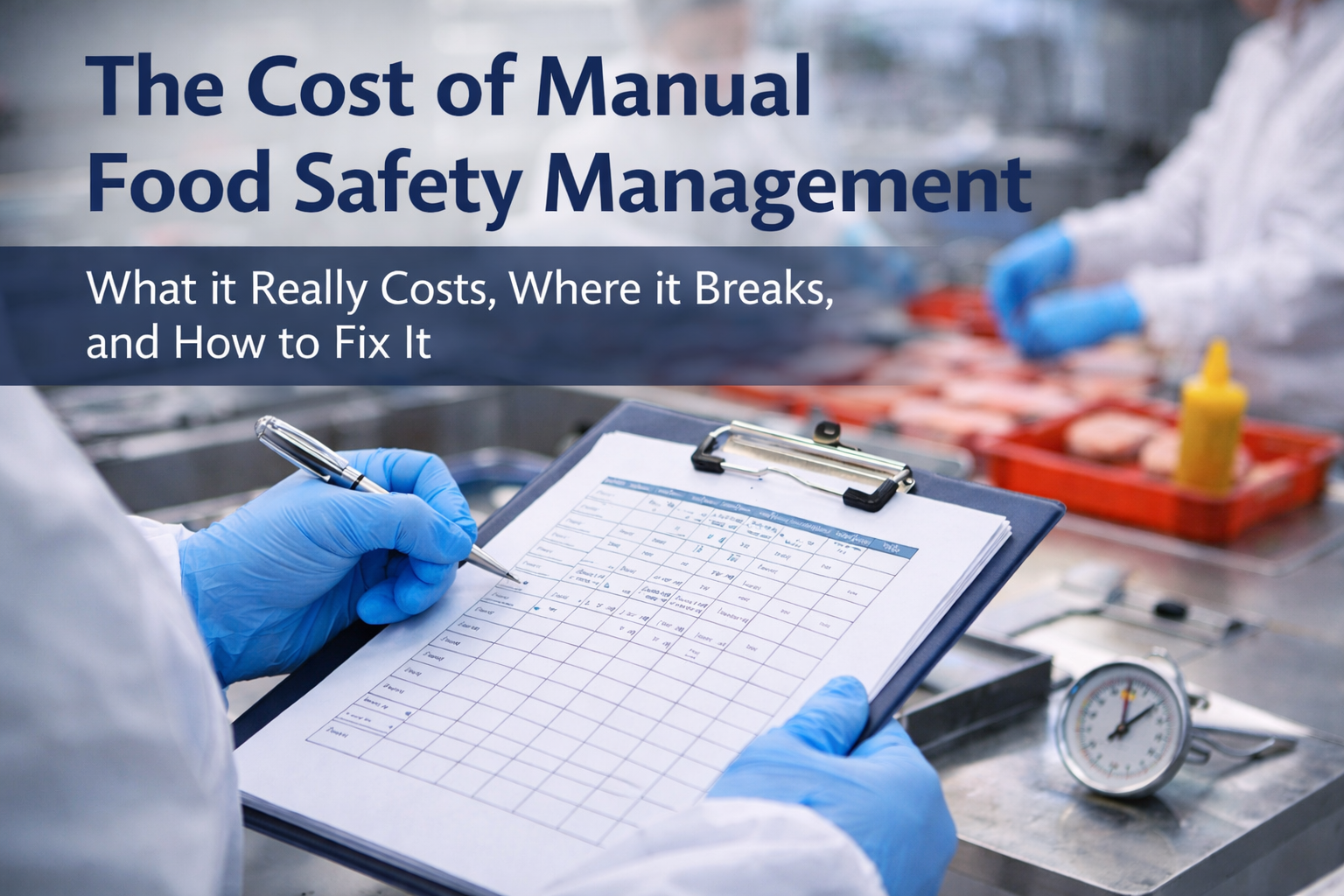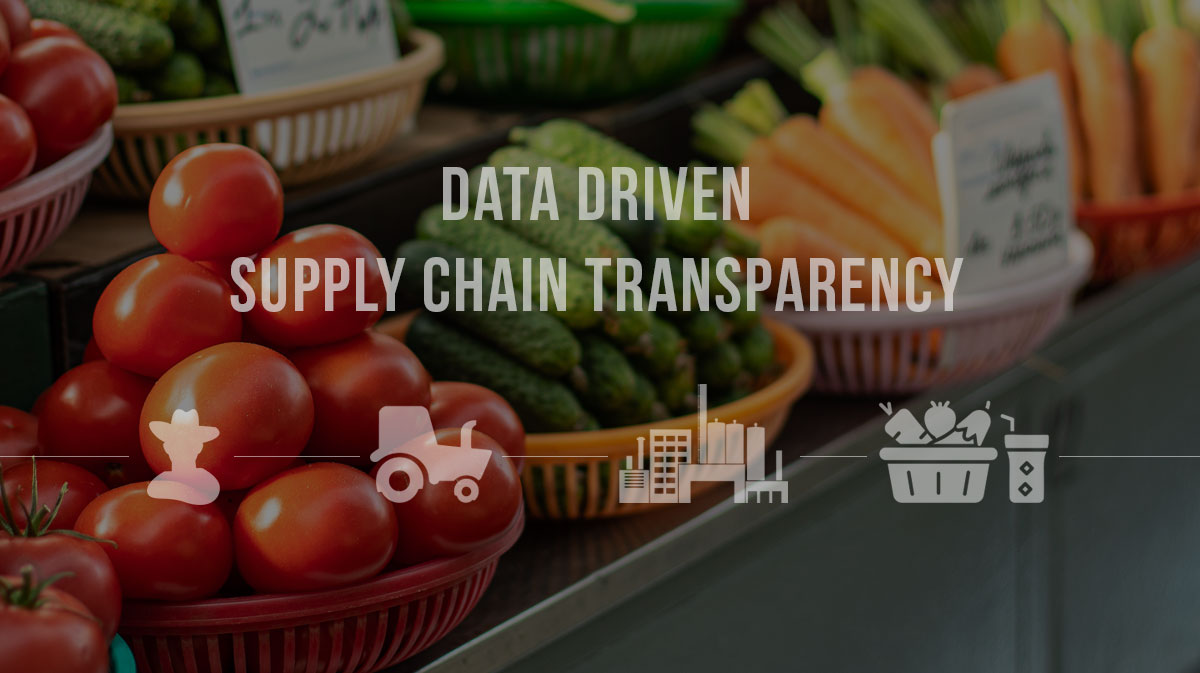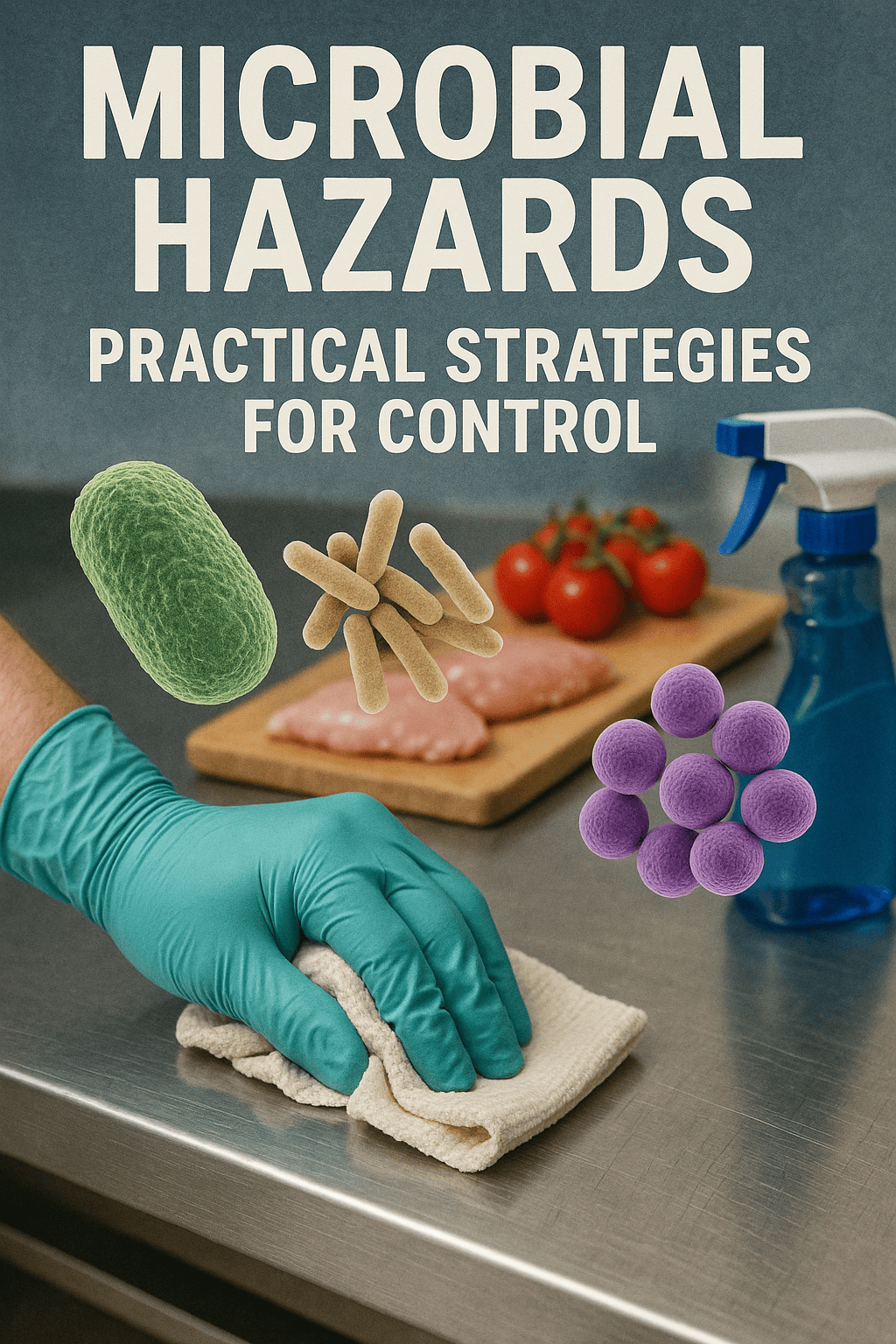SQF and other GFSI-benchmarked certifications are not vanity badges. They’re commercial passports. Retailers, distributors, and co-manufacturers use them to filter who gets shelf space or a supply agreement. If you’re heading toward an initial certification—or trying to lift audit scores—you need a plan that is brutally clear, owned by leadership, and executed with discipline. This guide explains the landscape, gives you a step-by-step approach, and peppers in concrete examples you can copy.
SQF vs. GFSI (and why it matters)
-
GFSI (Global Food Safety Initiative) does not certify anyone; it benchmarks the rigor of schemes (SQF, BRCGS, FSSC 22000, IFS, etc.).
-
SQF (Safe Quality Food) is one of those schemes; it’s common in North America, modular (Food Manufacturing, Storage & Distribution, Primary Production, etc.), and risk-based.
Bottom line: Pick the scheme your customers expect. If they say “GFSI certification,” ask which program they accept. Don’t overcomplicate it.
What auditors actually check
All GFSI-benchmarked audits revolve around three pillars:
-
Design – Your documented Food Safety Management System (FSMS): HACCP/PCP, pre-requisite programs (PRPs/GMPs), policies, and SOPs.
-
Execution – Records that prove you do what you say, consistently: sanitation logs, preventive maintenance, CCP monitoring, allergen changeover checks, supplier approvals, traceability tests, etc.
-
Effectiveness – Evidence your system works: trending nonconformances, micro/environmental results, complaint patterns, recalls/mock recalls, corrective actions that actually fix root causes.
If your documentation is perfect but your floor is messy—or your floor looks great but your records are thin—you’ll struggle. The audit is evidence-based.
The readiness model (use this to set expectations)
-
Level 0 – Ad hoc: People “know what to do,” but it isn’t written or recorded reliably.
-
Level 1 – Documented: Policies and SOPs exist, HACCP plan is updated, but records are inconsistent.
-
Level 2 – Controlled: Records are complete and on time; internal audits and corrective actions run on a schedule.
-
Level 3 – Data-driven: You trend results, quantify risks, and close CAPAs with root-cause rigor.
-
Level 4 – Culture-led: Operators own food safety; leadership reviews KPIs; near misses are reported without fear.
Certification requires Level 2+. High scores and fewer findings live in Level 3–4.
A step-by-step approach to audit readiness
Step 1: Define the scope and the customer requirement
-
Choose the standard and code/module. Be explicit: e.g., SQF Food Manufacturing Edition X, Module 11 + Module 2.
-
Confirm sites and products. Multi-site? Contract manufacturing? Cold storage? Get it in scope now.
-
Gap analysis. Compare your FSMS against the clauses of your chosen code. Flag gaps as NC-risk, improvement, or compliant.
Example: A frozen snack producer finds allergen changeover verifications are performed but not documented with a validated visual + protein swab. That’s an NC-risk.
Step 2: Strengthen your Hazard Analysis (HACCP/PCP)
-
Re-validate your flow diagrams for each product family. Walk the floor with the team; don’t do desk HACCP.
-
Confirm biological, chemical (including allergens), and physical hazards with scientific references.
-
Re-assess CCPs vs. CPs with decision trees.
-
Establish critical limits, monitoring, verification, and corrective actions that are specific, time-bound, and responsible-party-assigned.
Example:
-
CCP: Metal detection at 2.0 mm Fe, 2.5 mm non-Fe, 3.0 mm SS.
-
Monitoring: Every hour and at start/end of shift, plus product changeover; challenge wands documented.
-
Corrective action: Stop, segregate back to last good check, re-screen, document root cause (e.g., belt vibration changed), adjust and verify.
Step 3: Close PRP gaps (GMPs drive most findings)
Typical weak spots:
-
Allergen management: Label verification, changeover verification, and dedicated/controlled storage.
-
Foreign material control: Screens, magnets, sifters; magnet pull tests; light inspections for packaging.
-
Sanitation: Validated SSOPs, pre-op inspections with objective criteria (ATP, visual standards).
-
Pest control: Trending and timely closures; sealed penetrations; waste management.
-
Maintenance & calibration: Lubricant control, food-grade status, tool segregation, calibration traceability.
-
Employee hygiene/training: Gowning, handwashing verification, and refresher training logs.
Tip: Treat these like CCPs in rigor, even if they aren’t. Auditors spend a lot of time here.
Step 4: Build a living document ecosystem (not a binder museum)
-
Controlled documents with versioning and change history.
-
Records with date, time, signature/initials, lot/batch, and product.
-
Electronic systems (e.g., food safety software) are fine—actually preferred—if access controls, time stamps, and audit trails are enforced.
Example: Replace paper temperature logs with digital probes feeding a dashboard. Missed readings trigger alerts, and supervisors sign off electronically.
Step 5: Supplier assurance and material risk
-
Risk-rate suppliers (A/B/C) using criteria like food safety certification, historical performance, and material risk (allergens, origin, fraud risk).
-
Collect GFSI-benchmarked certificates, specs, COAs, allergen statements, and vulnerability assessments (for Food Fraud/Defense).
-
Audit high-risk suppliers (or require a third-party audit).
-
Validate incoming verification: sampling plans, rapid tests, COA verification frequency.
Example: Spices are high-risk for adulteration. Increase COA verification frequency and keep a vulnerability assessment with mitigation actions (approved brokers list, spot testing).
Step 6: Traceability and recall—prove you can move at speed
-
Achieve one step forward, one step back by lot, including rework.
-
Conduct mock recalls at least annually; aim for <2 hours to identify all impacted finished goods and WIP.
-
If you use food traceability software, add automatic lot genealogy and recall reporting to shave hours into minutes.
Example: During a mock recall for a supplier allergen mislabel, your system produces a list of all finished lots, customers shipped, quantities, and inventory on hand within 40 minutes. That’s credible performance.
Step 7: Internal audits and facility walk-throughs
-
Schedule clause-by-clause internal audits against the standard.
-
Use fresh eyes—rotate auditors or bring in a peer.
-
For each finding, issue a Corrective Action & Preventive Action (CAPA) with root cause (5 Whys or Fishbone), correction, effectiveness check, and due date.
Example finding → CAPA: Missing magnet pull test for one shift. Root cause: unclear responsibility on revised SSOP. Fix: update SSOP with role ownership, retrain, and add daily verification checklist. Verify: three months of completed records without misses.
Step 8: Training and culture
-
Role-based training matrices (operators, sanitation, QC, maintenance, warehouse, QA).
-
Annual refreshers for HACCP/PCQI topics, allergens, foreign material control, and documentation hygiene.
-
Supervisor coaching: how to handle auditor questions (“Answer what was asked, show evidence, don’t speculate.”).
Micro-drills: 5-minute huddles on how to respond when a CCP is out of control. You want muscle memory, not panic.
Step 9: Management review that actually drives change
-
Quarterly or semi-annual Management Review with data: KPIs (complaints per million, NC trend, first-time pass rate, environmental Listeria trend), audit outcomes, supplier performance, recalls/mock recalls, resource needs.
-
Assign actions with deadlines and owners. If you under-resource sanitation and still expect better scores, you’re fooling yourself.
Step 10: Pre-audit countdown (Day-minus-30 to Day-minus-1)
T-30 days
-
Freeze document versions. Archive old ones.
-
Close open CAPAs or document why they remain open with interim controls.
T-14 days
-
Run a full mock audit with a tougher-than-real auditor.
-
Validate traceability and CCP records are complete and legible. Fix holes now.
T-7 days
-
Calibrations, pest control site map updates, chemical inventory cleaned.
-
Front desk prepared: visitor sign-in, GMP rules, eyewash and first-aid logs verified.
T-1 day
-
Deep clean high-risk areas and conduct pre-op inspections.
-
Brief team on what to expect: routes, PPE, sample questions.
What “good” looks like on audit day
-
Kick-off: You set scope clearly, hand the auditor a clean site map and org chart, and outline the production schedule.
-
Document review: Everything requested is produced fast, with version control and signatures.
-
Floor tour: Operators can explain their tasks and show records. Supervisors know CCP limits and actions.
-
Sampling: You retrieve records or product retains without scrambling.
-
Close-out: You acknowledge findings, ask clarifying questions, and propose initial corrections.
Pro tip: If you don’t know an answer, say so and fetch the right person. Guessing is worse than silence.
After the audit: Close findings like a pro
Expect a mix of minor and sometimes major nonconformances. Your response must show system thinking, not band-aids.
For each NC:
-
Containment/Correction: What you fixed immediately.
-
Root cause: Use 5 Whys; avoid “human error.”
-
Corrective action: What changes permanently (SOP, training, engineering control).
-
Verification of effectiveness: How you’ll prove it worked (trend data, targeted internal audit).
-
Owner and date.
Example:
-
NC: Incomplete allergen changeover verification on Line 2 during overtime shift.
-
Root cause: Overlapping responsibilities between production and sanitation during OT; no supervisor sign-off after 10 p.m.
-
Action: Update responsibility matrix; add mandatory supervisor sign-off; deploy protein swabs for first post-OT run; add weekly data review.
-
Verify: Zero misses in 90 days; internal audit observation confirms compliance on two OT shifts.
Common pitfalls (avoid these)
-
Copy-paste HACCP. If your hazards and CCPs look generic, auditors notice. Tailor them to your equipment, ingredients, and controls.
-
Record gaps around shift changes and weekends. These are magnets for findings.
-
Calibration ghosts. Instruments not in the calibration master list, or stickers with expired dates.
-
Supplier approvals stuck in limbo. “Temporary” approvals without timelines die on your desk.
-
Overpromising in CAPAs. If you say you’ll retrain 150 people by Friday, you’ll miss it. Be realistic and phased.
How digital tools reduce audit risk (and stress)
Paper fails under pressure. A modern, Food safety platform (or specialized food traceability software) gives you:
-
Real-time task compliance: CCP checks, sanitation verifications, allergen changeovers—scheduled, completed, and escalated if late.
-
Audit-ready retrieval: Pull six months of records in seconds, with timestamps and user trails.
-
Automated traceability: Lot genealogy forward and backward for instant mock recalls.
-
Trending: Nonconformances, environmental results, complaints—all visualized for Management Review.
-
Supplier portal: Certificates, COAs, and expiries with automated alerts.
If you’d like to see how NORMEX handles this end-to-end, book a demo.
Two real-world examples
Example 1: Beverage co-packer chasing big retail
Context: Mid-size co-packer, high SKU churn, frequent allergen changeovers.
Gaps found in gap analysis: Allergen verification inconsistent on weekend runs; traceability took 6+ hours.
Actions:
-
Introduced protein swab verification for every allergen changeover; trained sanitation and production jointly; supervisor sign-off added.
-
Implemented digital lot tracking; enforced scanning at receiving, batching, and packing.
-
Ran monthly mock recalls until the team hit <90 minutes.
Outcome: SQF initial certification with minor NCs; secured a national retailer contract within 60 days.
Example 2: Frozen bakery with physical hazard trend
Context: Customer complaints for small plastic fragments spiking quarter-over-quarter.
Root cause: Worn scraper edges on depositor; no defined replacement frequency; inspection was visual only.
Actions:
-
Added foreign material control plan: magnet checks, screen inspections, and scheduled scraper replacement at defined run-time hours.
-
Captured maintenance work orders in the FSMS and trended complaints/month.
-
Introduced final-pack visual inspection with sample sizes tied to risk.
Outcome: Complaints dropped 70% in a quarter; audit finding closed with objective evidence and trend charts.
KPIs that predict audit performance
-
On-time record completion rate (target >98%).
-
Internal audit closure time (average days from finding to verified close; target <30).
-
Mock recall duration (target <2 hours to complete customer distribution list).
-
CCP/CP misses per million units (trend downwards).
-
Supplier document currency (target 100% current for A-risk suppliers).
Track these monthly and review them with leadership. What gets measured gets fixed.
Simple RACI for audit readiness
| Activity | QA | Production | Sanitation | Maintenance | Warehouse | Leadership |
|---|---|---|---|---|---|---|
| HACCP review | R | C | C | C | C | A |
| PRPs (GMPs) | A | R | R | C | C | C |
| Records control | A | R | R | R | R | C |
| Internal audits | A | C | C | C | C | C |
| Supplier approval | A | C | C | C | R | C |
| Mock recall | A | C | C | C | R | C |
|
A = Accountable, R = Responsible, C = Consulted. |
||||||
|
Make it explicit so tasks don’t fall through the cracks. |
Your 90-day roadmap (copy/paste this)
Days 1–15
-
Confirm scope and customer expectations; select code and module(s).
-
Run gap analysis; create CAPA tracker with owners/dates.
-
Validate flow diagrams; schedule HACCP re-validation walk-through.
Days 16–45
-
Close high-risk PRP gaps (allergens, sanitation, foreign material, pest).
-
Lock CCP definitions; calibrate and verify instruments.
-
Stand up electronic records for CCP/CP and sanitation if possible.
-
Start supplier re-qualification with risk ratings.
Days 46–75
-
Run internal audits by clause; issue CAPAs.
-
Conduct traceability stress test; cut mock recall time below 2 hours.
-
Train supervisors on audit etiquette and escalation.
Days 76–90
-
Management Review with KPIs and resourcing decisions.
-
Final mock audit and pre-op deep clean.
-
Freeze document versions; prep the audit room and document index.
FAQ (fast answers to questions you’ll get)
Do we need a full-time SQF Practitioner/PCQI?
Yes—someone competent must own the system. For multi-shift operations, ensure coverage.
Can we stay on paper?
You can, but you’ll bleed time and risk. Digital systems reduce misses and speed retrieval. Auditors don’t penalize good tech; they welcome it—if controls (sign-offs, timestamps) are solid.
How long to first certification?
If you’re Level 1 baseline, plan 90–180 days with leadership support. Under-resourced teams take longer.
What if we get a major NC?
Respond fast with strong root cause and containment. Most schemes allow closure within a defined window. Don’t argue—fix.
Final word
Certification isn’t about decorating the lobby. It’s about building a system that survives turnover, weekends, and peak season—without putting consumers or your brand at risk. If you execute the steps above with discipline, your audit becomes a validation of what you already do every day, not a fire drill.
If you want to see how a digital platform can simplify this—from HACCP to traceability to audit-day retrieval—book a NORMEX demo here: https://normex.ca/demo.






